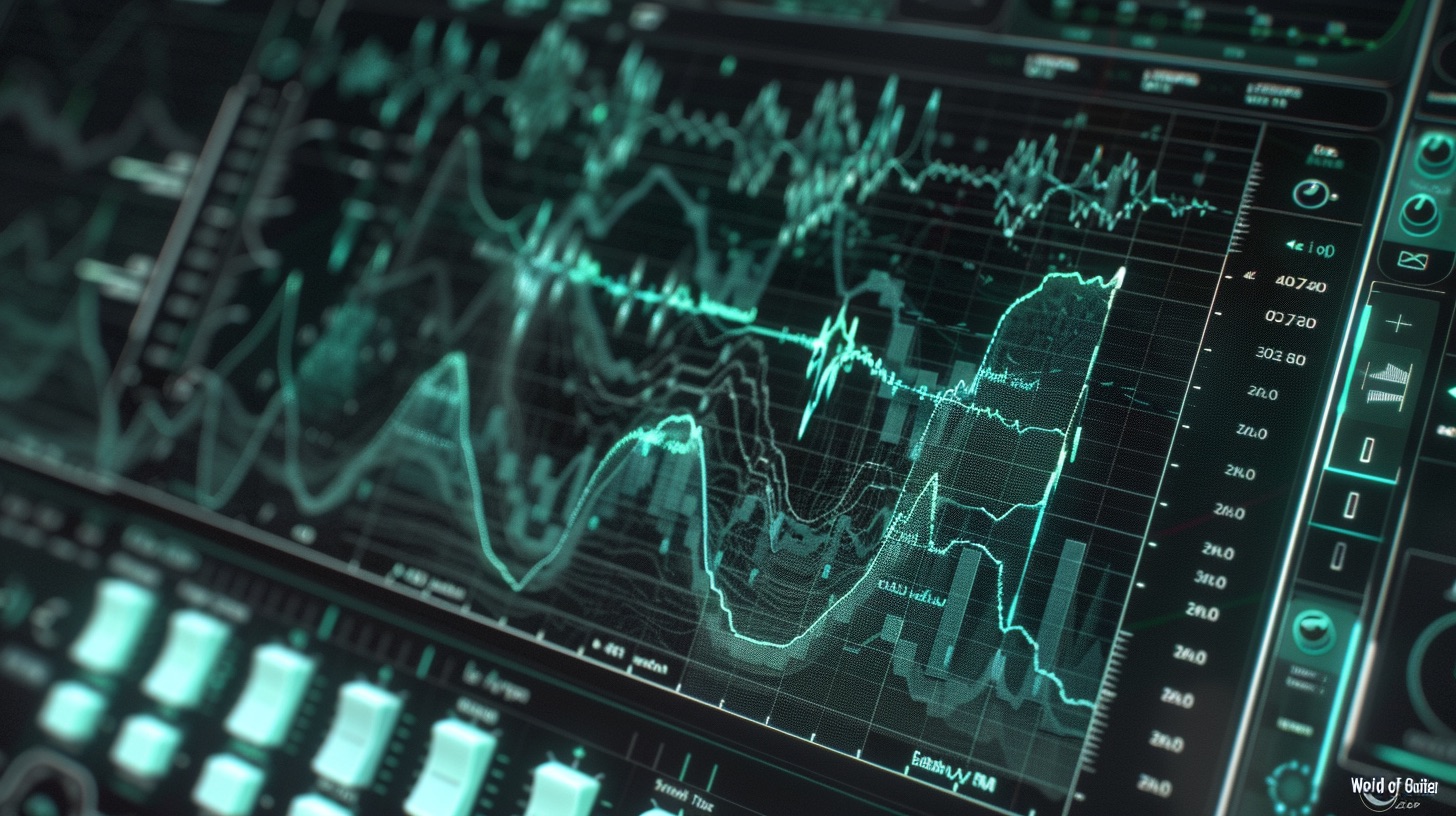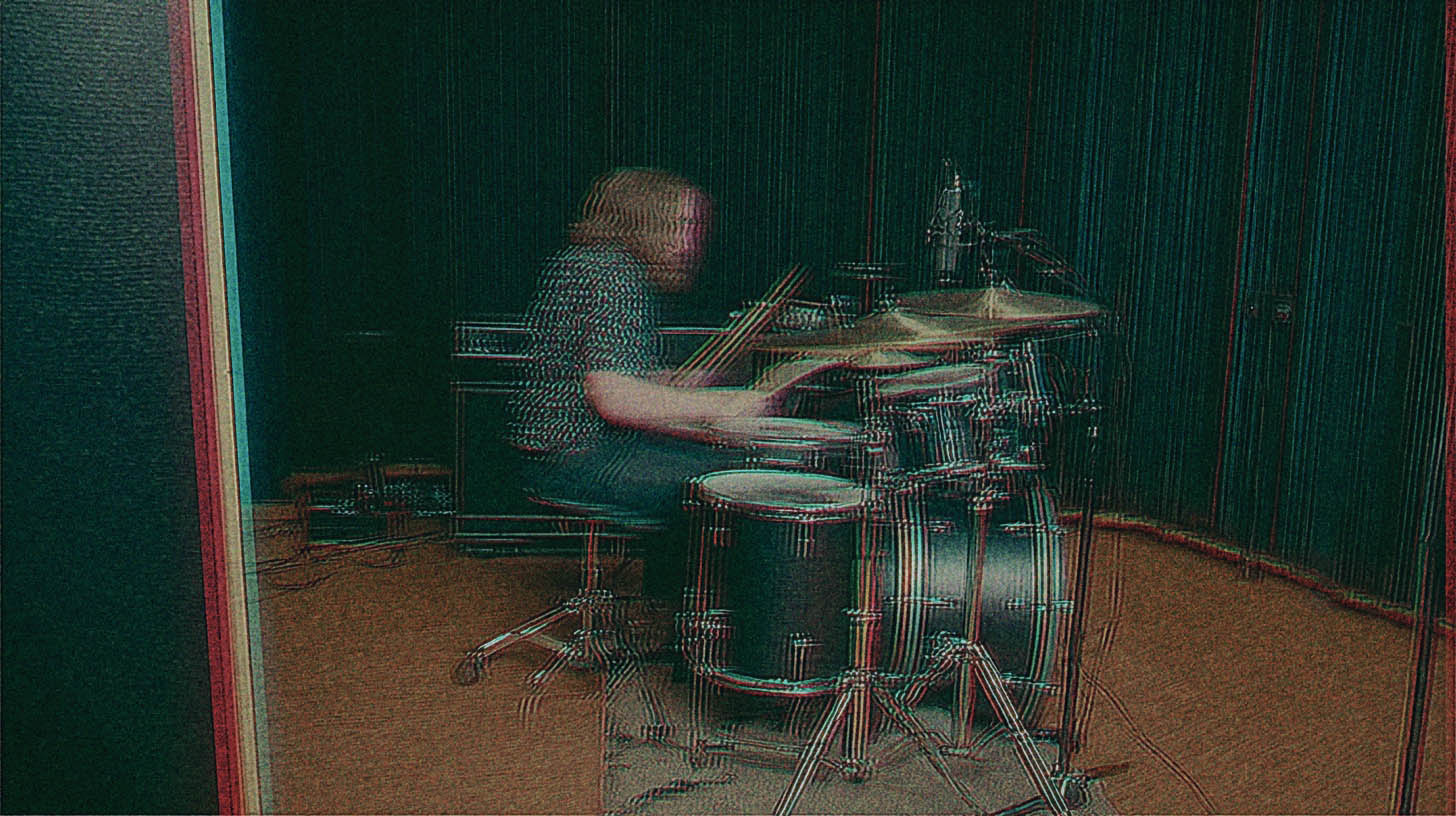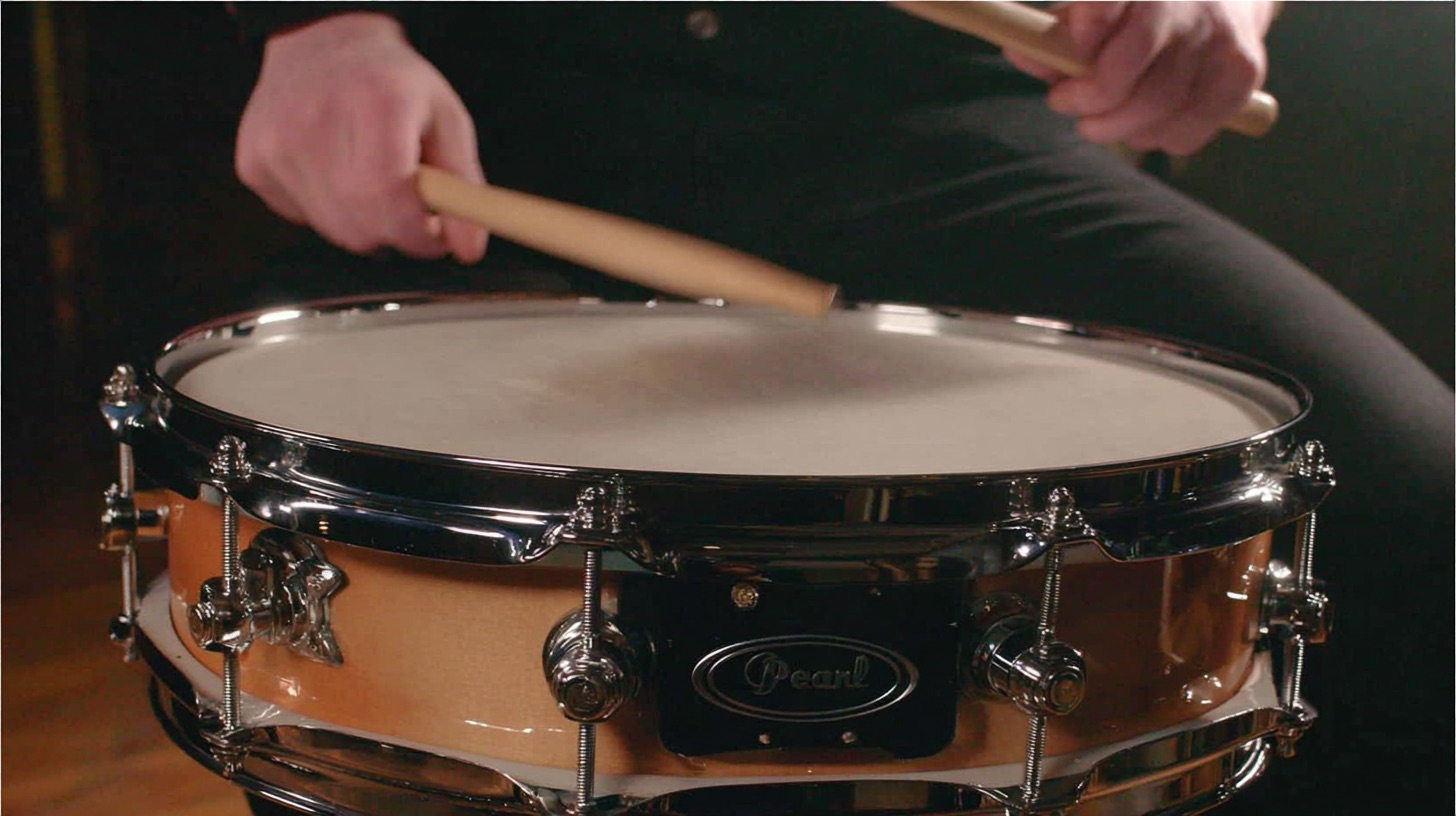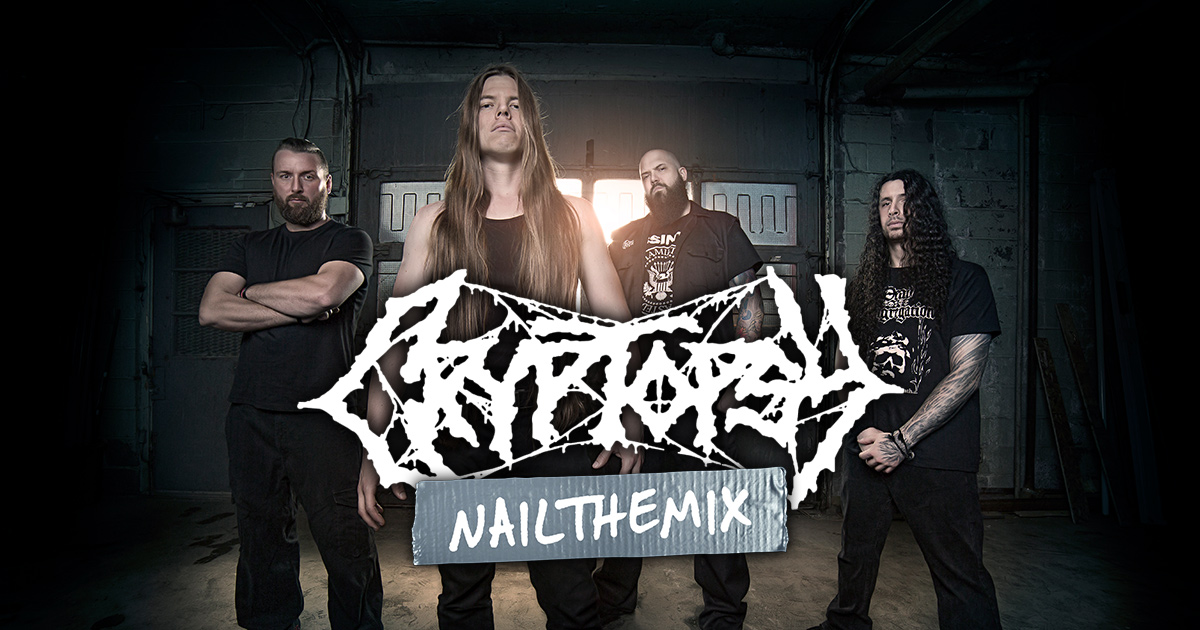
Mixing Angelmaker’s Brutal Guitars: Christian Donaldson’s Amp and Plugin Chain
Nail The Mix Staff
Let’s be honest: dialing in a massive, modern heavy metal guitar tone can be a battle. You can have the best amp sims on the market, but sometimes they just don’t sit right in a dense mix. If you’ve ever felt that frustration, you’re not alone. In a recent Nail The Mix session, producer Christian Donaldson (Cryptopsy) broke down his crushing guitar mix for Angelmaker and revealed that he often struggles to make amp sims work, preferring to rely on his own tried-and-true methods.
So, how does he get that powerful, articulate, and brutally heavy Angelmaker guitar sound? It’s a killer combination of a solid source tone, smart EQ, and a multi-layered chain of bus and parallel processing. Let’s dig into the exact plugin chain and techniques he uses.
The Foundation: Why Real Amps (Or Your Own Profiles) Still Rule
Before a single plugin is opened, the conversation starts with the DI signal. While many producers work with provided amp sim tracks, Christian admits he almost always ends up re-amping them or using his own custom Kemper profiles.
Why? Familiarity and control. When you use your own gear—whether it’s a real amp or a profile you’ve created yourself—you know exactly how it will react. You understand its character, its sweet spots, and its shortcomings. This gives you a massive head start over trying to wrangle a foreign tone into submission. It’s a great reminder that the source tone is king.
Shaping the Core Tone: Pre-Bus EQ and Dynamics
Once Christian has his raw tone from the amp, he begins shaping it with a few key moves on the individual guitar tracks before they even hit a bus.
The Initial Bite: The 2.5k Shelf Boost
The very first move is a significant one. Using an API 550B EQ, Christian adds a +4dB shelf boost at 2.5kHz. This isn’t a subtle tweak; it’s a foundational move designed to make the guitar bite and push forward in the mix from the get-go. This simple high-mid boost ensures the guitars have the aggression they need to cut through everything else.
Carving Space with Surgical and Dynamic EQ
With the initial aggression established, it’s time to clean things up and create space. This involves two critical EQ strategies.
First, he plays the age-old game of “find the annoying frequencies.” For heavy guitars, these problem spots are often found lurking around 4kHz and 6kHz. Using a narrow EQ band, he surgically dips these areas to remove harshness without gutting the tone’s power.
Second, and more dynamically, he creates separation between the bass and guitars. Instead of a static EQ cut on the guitars, he uses a dynamic EQ sidechained to the bass. This clever trick works like a “surfer EQ,” automatically dipping the specific low-mid frequencies in the guitars that correspond to the notes the bass is playing, but only when the bass is playing them. This carves out a perfect pocket for the bass, creating clarity in the low end without thinning out the guitars when the bass isn’t present.
The Guitar Bus: Adding Weight, Width, and Glue
With the individual tracks treated, they get sent to a guitar bus for the real heavy lifting. This is where Christian adds character, cohesion, and solves mix-wide problems.
Creamy Low-Mids with Crane Song Phoenix II
To add body and warmth, Christian uses the Crane Song Phoenix II plugin on the guitar bus. He uses it to introduce a “low creamy mids” boost, which adds a pleasant saturation and weight that helps glue the guitars together, similar to how tape saturation might work.
The Soothe2 Dilemma (And a Manual Alternative)
Soothe2 is a popular but sometimes controversial tool for guitars. Christian uses it with extreme caution. While it’s great for taming harshness, he warns that it can easily kill the “scratchiness” and raw energy that makes a metal guitar tone heavy. One wrong click, and your tone can sound thin and lifeless.
As an alternative, he suggests a more manual approach using the “Insufferable Mid-range Filter” in KClip Pro. This allows you to “fish for your frequency like a man,” finding a single problematic mid-range spot and dialing in a static cut. Because it isn’t constantly moving like Soothe2, it can sound more natural and preserve the guitar’s raw character.
Presence and Saturation with Waves H-EQ
For more tone shaping and aggression, the Waves H-EQ is a go-to. He’ll use its EQ bands to dial in presence and enhance the pick attack. But the secret weapon is the “Analog” section. He loves the saturation it provides, often using the “Tubes” setting for smoothness or, more recently, the “Aggressive Mid-range” setting for a fiercer, more killer character.
Creating Width: A Two-Pronged Approach
Width is crucial for a massive stereo image. Christian uses a multi-stage approach. First, he might use a bit of the broad stereo widener built into the H-EQ. Then, for more targeted control, he’ll use a plugin like Brainworx bx_shredspread to widen only the mid-range frequencies. This spreads the core of the guitar tone out to the sides without making the high-end fizz or low-end mud feel disconnected.
Parallel Processing for Maximum Impact
As if the bus processing wasn’t enough, Christian runs a parallel guitar track for even more power and control. This track is all about aggression and is blended back in with the main bus.
Building the Parallel Chain
The parallel chain is designed to be a “heavy lifter.”
- More Mids: He starts with another instance of Phoenix II to push those creamy low-mids even harder.
- Heavy Compression: Next, he’ll apply heavy compression to make the palm-muted chugs incredibly punchy and consistent.
- Pick Attack: He boosts the top-end to add more pick attack and clarity.
- Widen the Treble: In a brilliant move that complements the main bus, he uses a stereo widener on the parallel track to enhance the treble frequencies. This pushes all that new pick attack out to the sides of the mix.
- Slam it with an L1: To top it all off, he uses the good old Waves L1 Limiter to absolutely slam the parallel signal, bringing up all the detail and aggression before blending it under the main guitar bus.

100+ Insanely Detailed Mixing Tutorials
We leave absolutely nothing out, showing you every single step
Bringing it All Together
Christian Donaldson’s approach to mixing Angelmaker’s guitars is a masterclass in building a huge tone layer by layer. It starts with a solid foundation and uses precise, purposeful processing at every stage—from individual tracks to the main bus and a powerful parallel channel.
Angelmaker on Nail The Mix
Christian Donaldson mixes "Relinquished"
Get the Session
These are the exact kinds of moves that separate a decent mix from a professional, release-ready track. Going beyond presets and learning the why behind each plugin choice is what we’re all about at Nail The Mix. If you’re tired of guessing, our guide on mixing modern metal beyond presets is the perfect place to start.
Ready to see every single plugin setting and hear how these techniques come together with the drums, bass, and vocals? Dive into the full Angelmaker mixing session with Christian Donaldson on Nail The Mix and get the multitracks to try them yourself.
Get a new set of multi-tracks every month from a world-class artist, a livestream with the producer who mixed it, 100+ tutorials, our exclusive plugins and more
Get Started for $1




